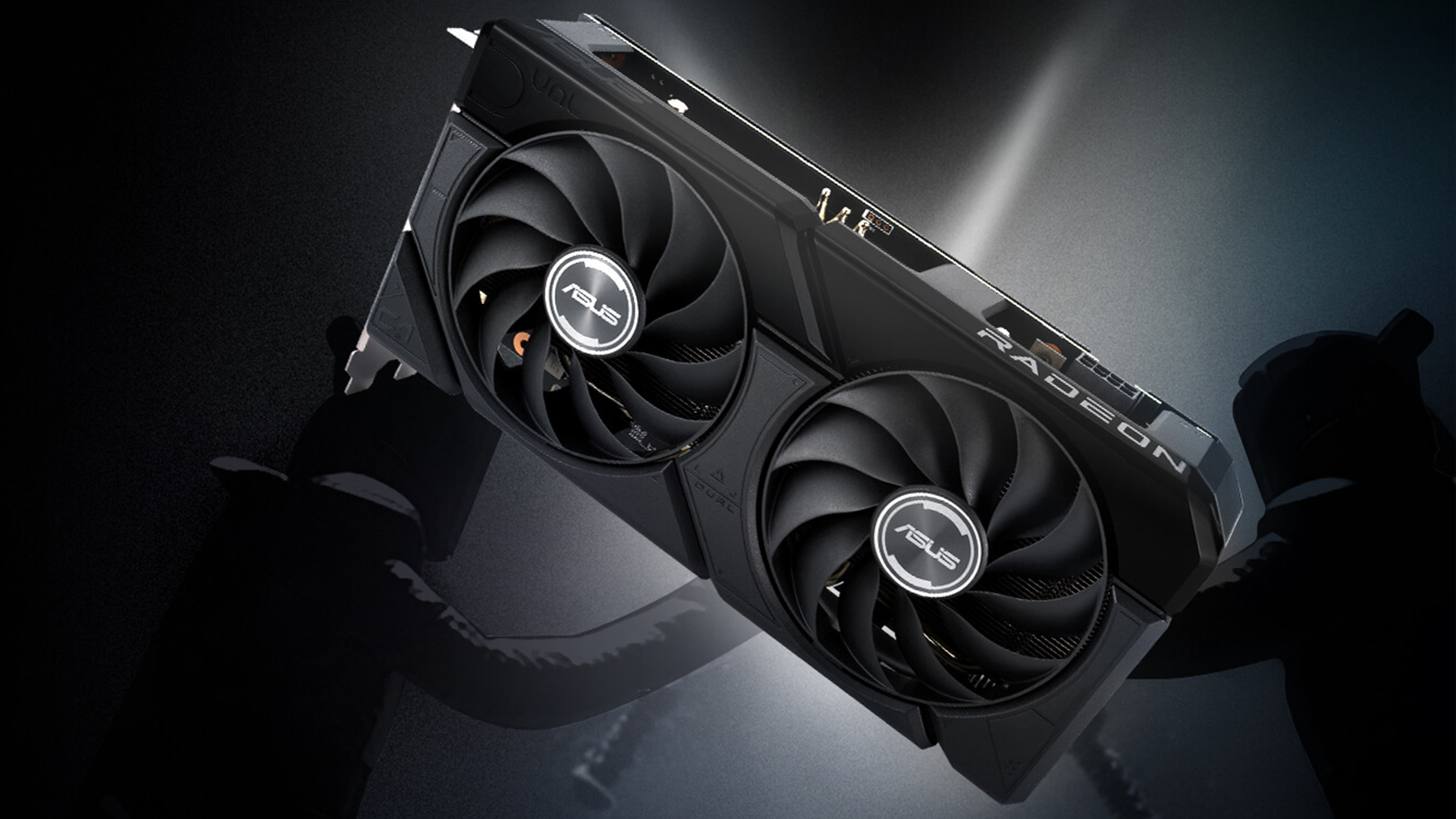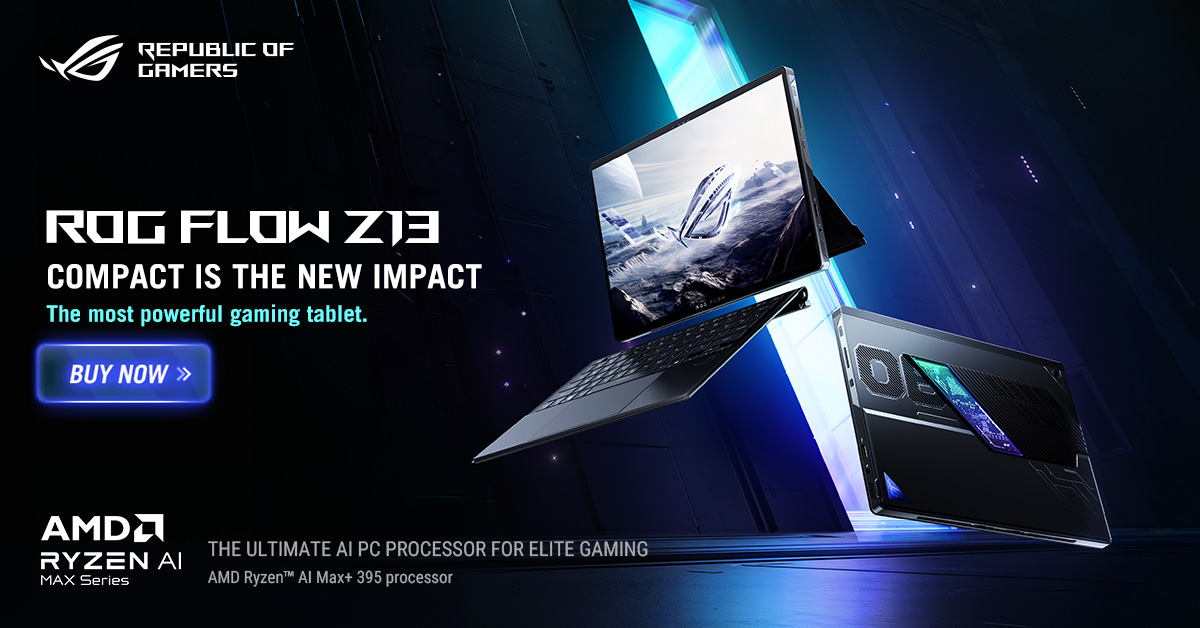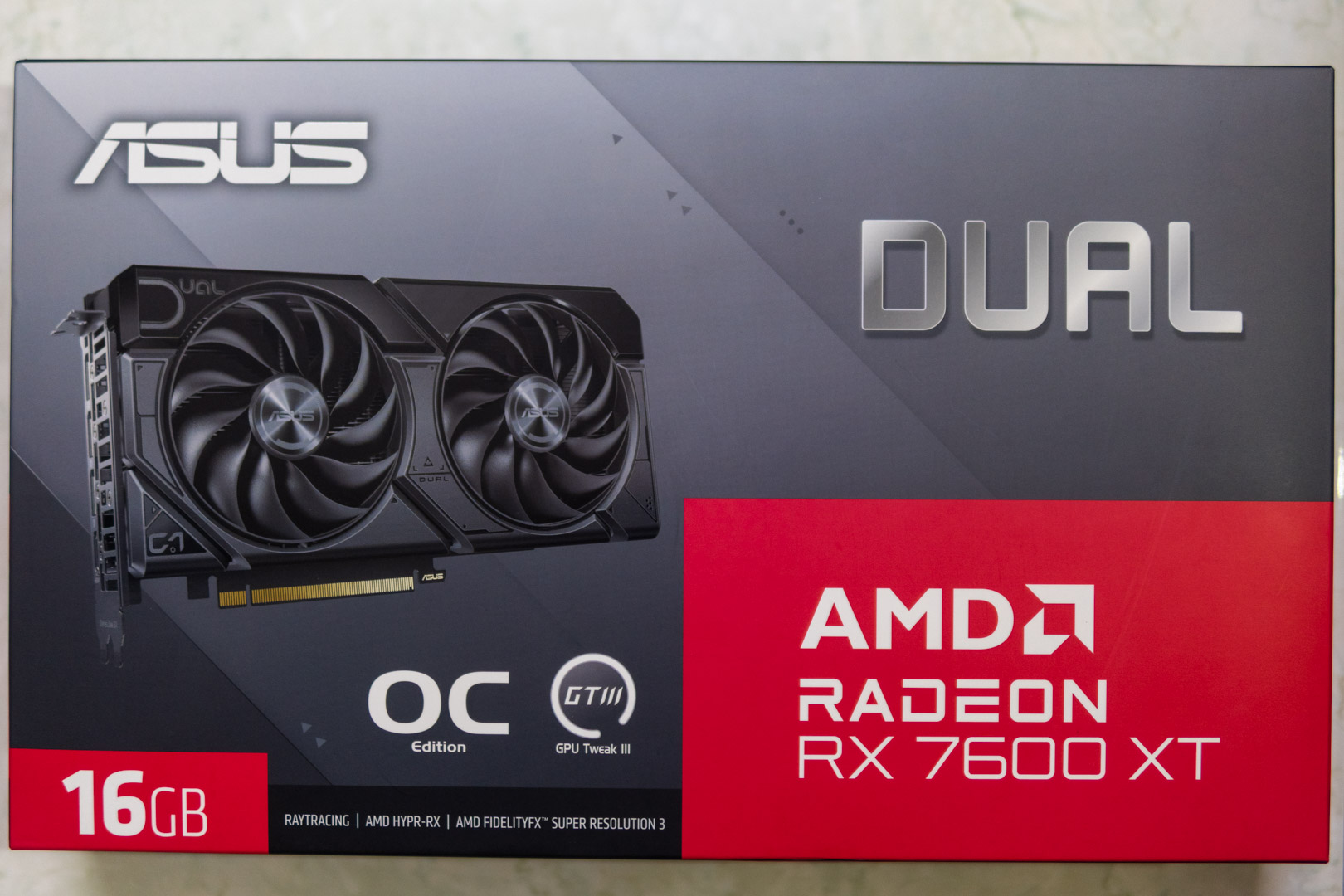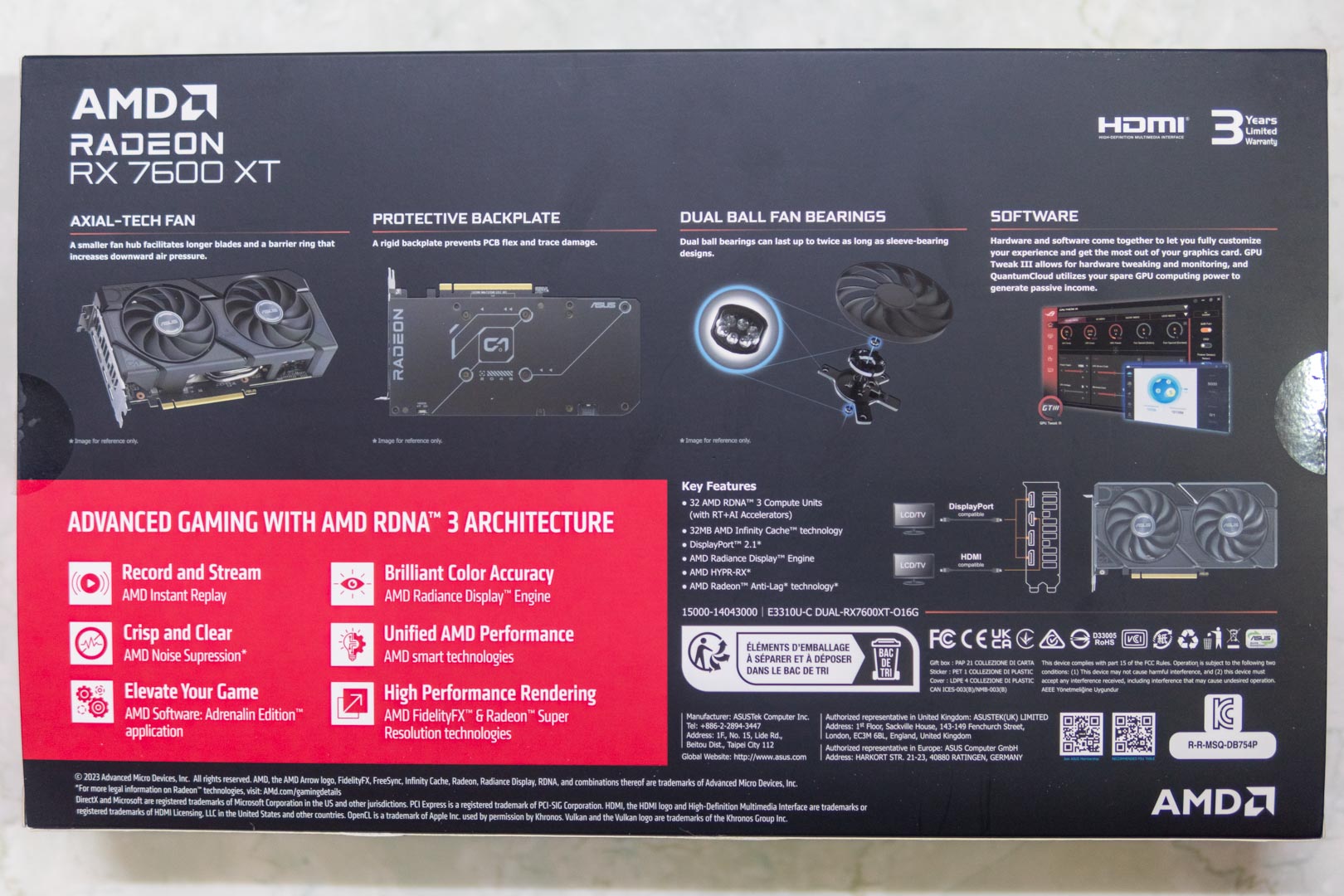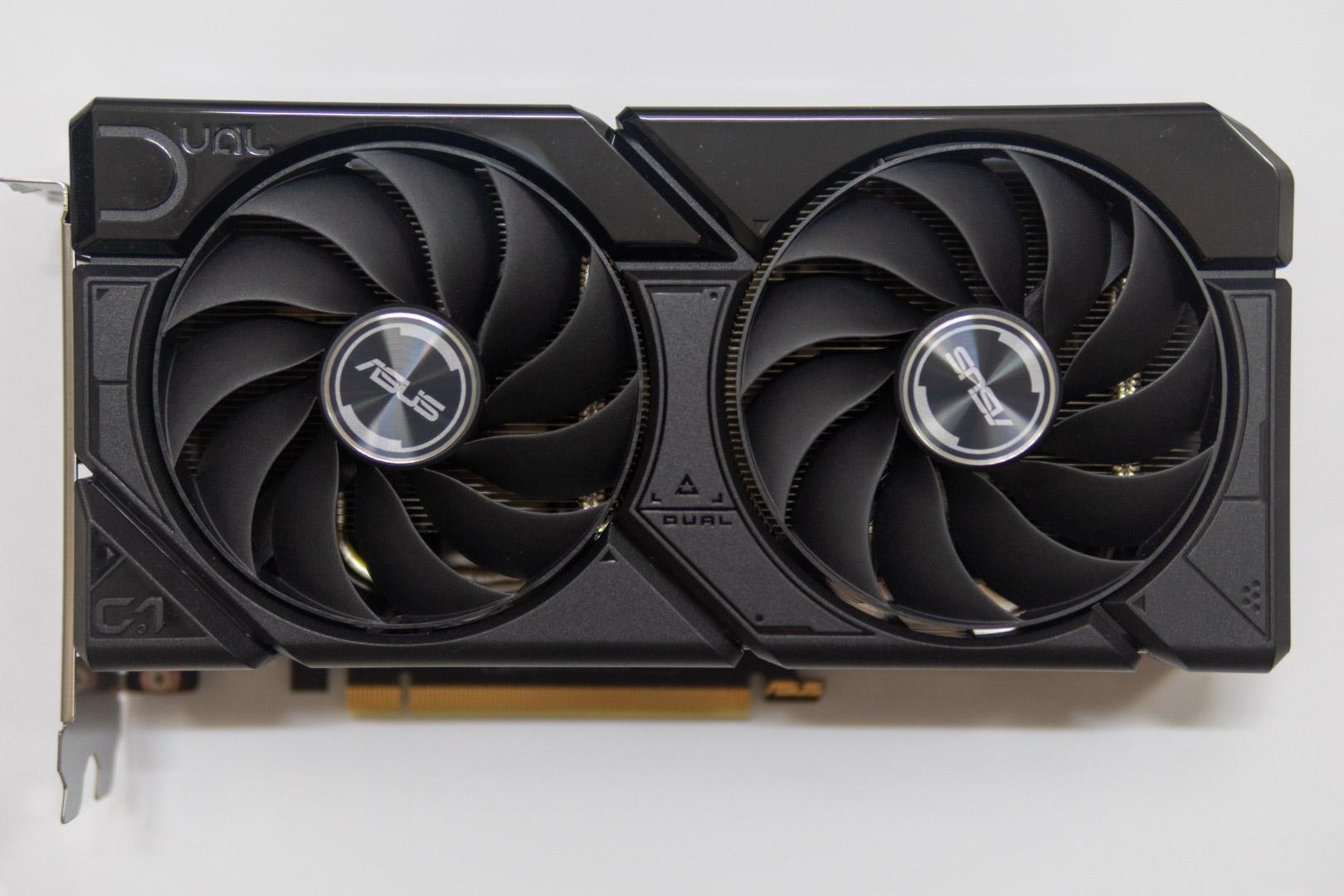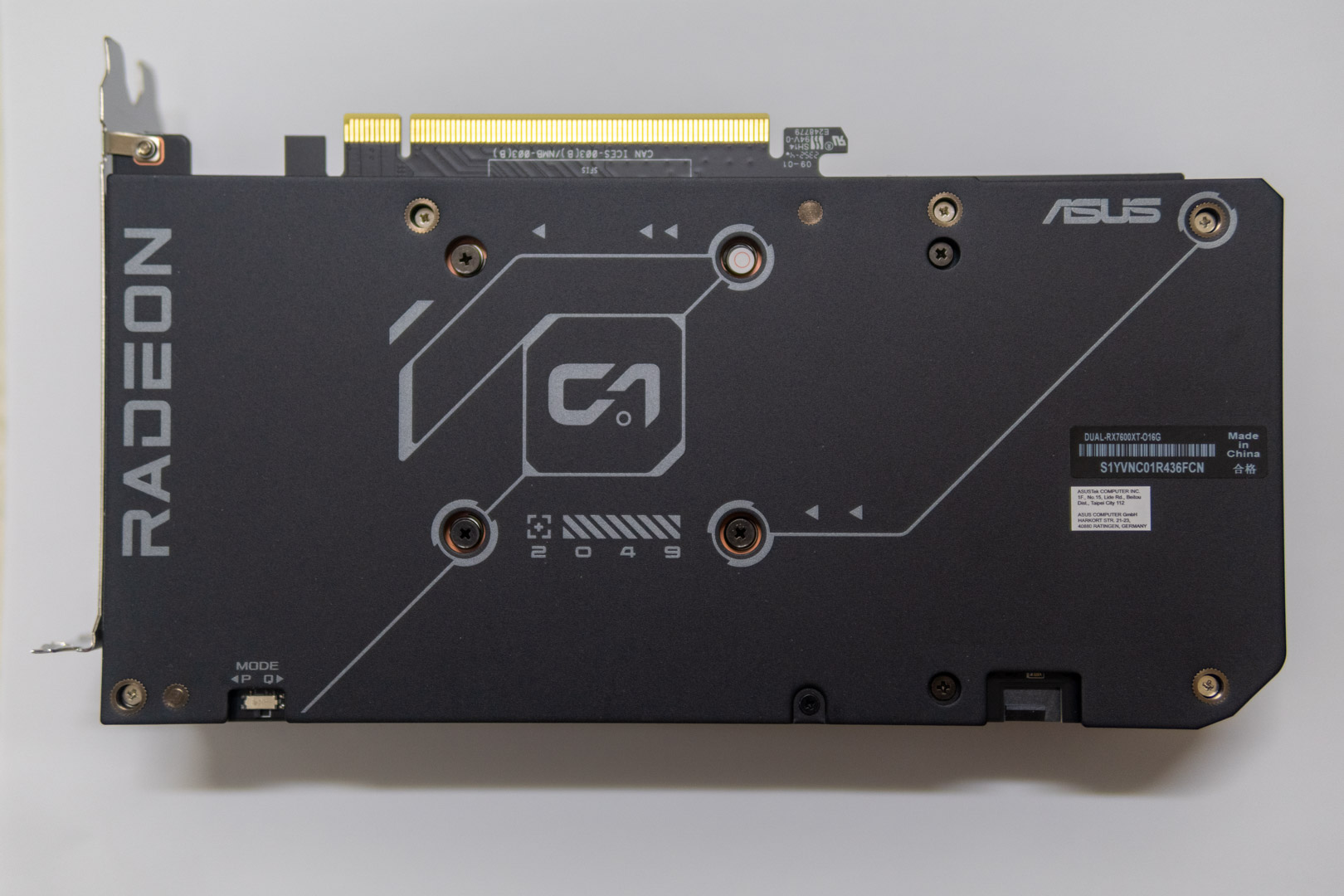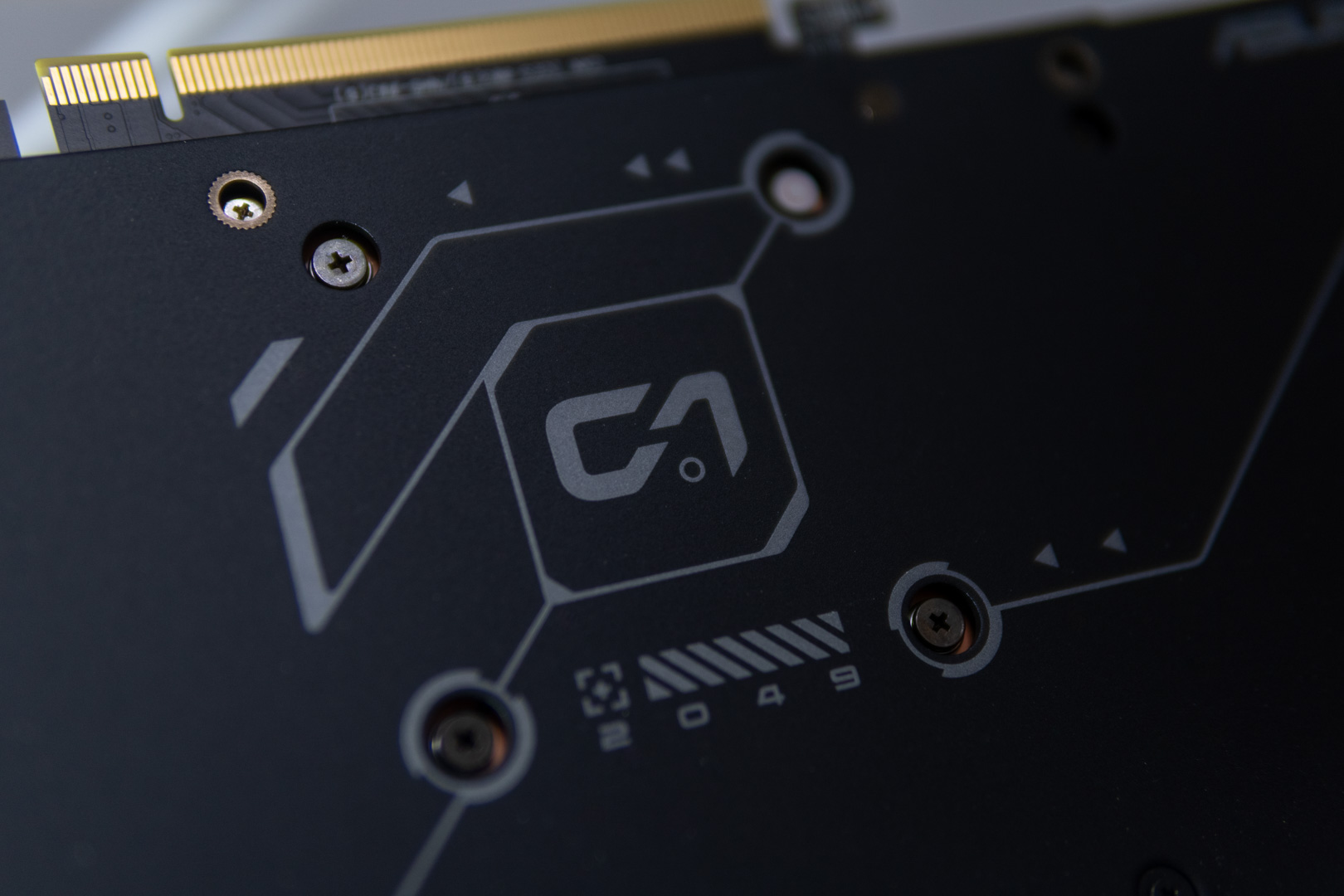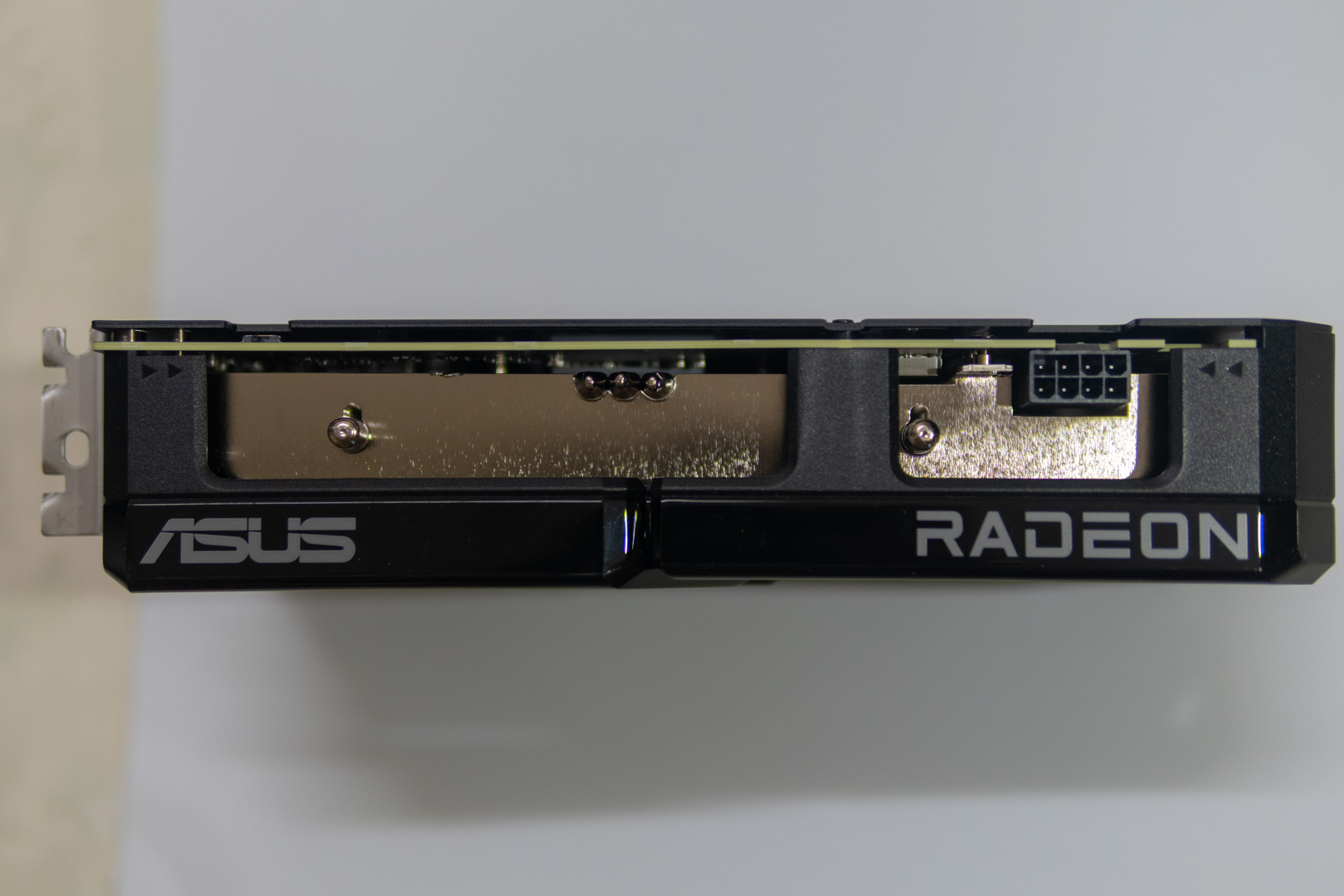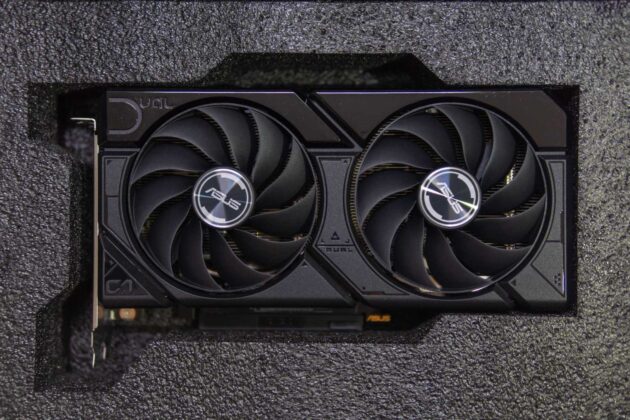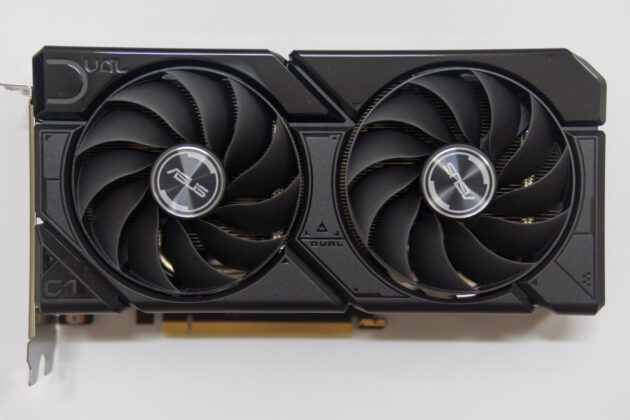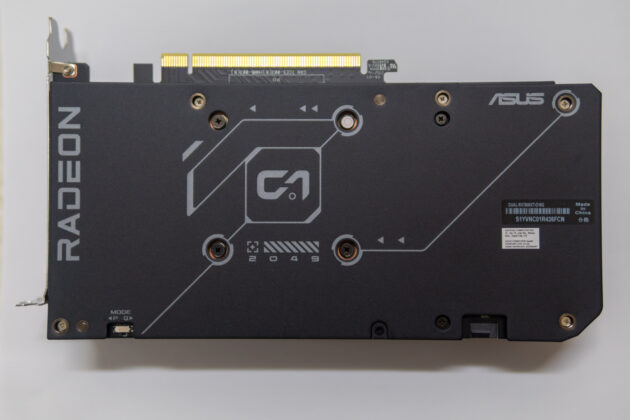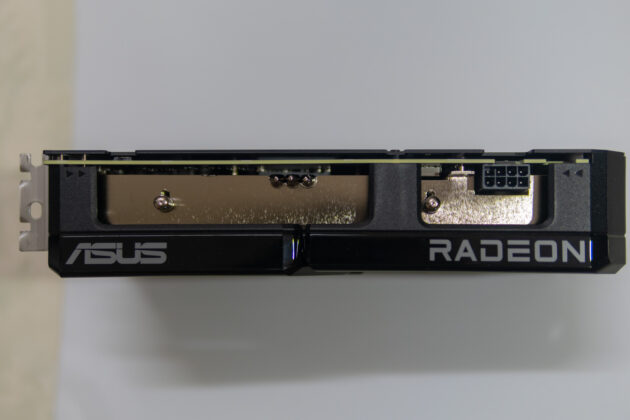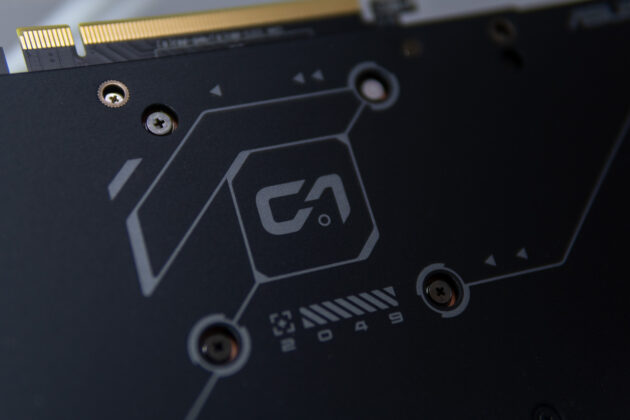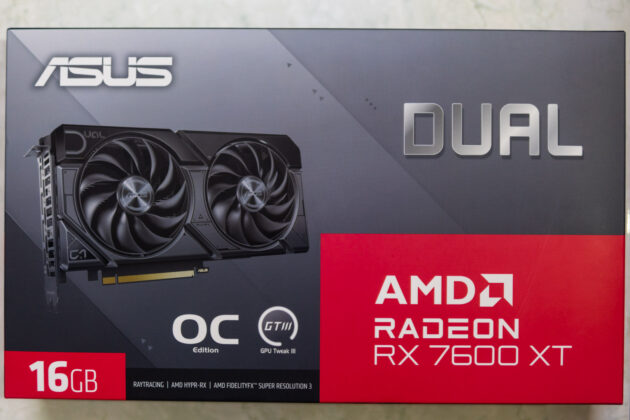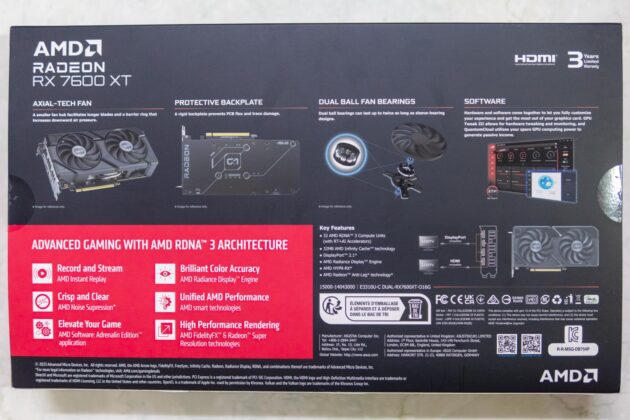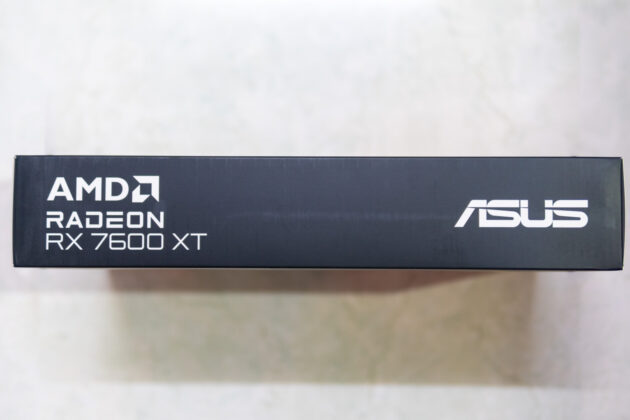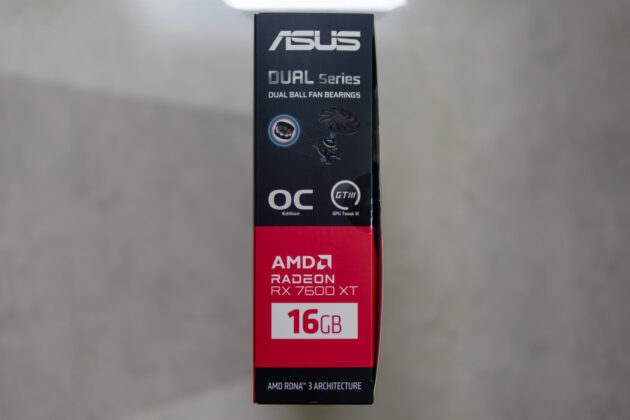We’ve recently had a chance to take a closer look at the ASUS Dual Radeon™ RX 7600 XT OC Edition, which comes with 16GB VRAM. This GPU is all about making your games run really well, especially if you’re into playing them on 1080p resolution. I had rather high expections because it’s made to handle high level of details smoothly, and it also looks like it could be a great choice for anyone thinking about moving up to 2K resolution.
The ASUS Dual Radeon™ RX 7600 XT OC Edition is aiming at individuals who really care about getting a crisp details with smooth frame rates in their games, without sacrificing big bucks. It’s packed with enough power to make the most out of the games we have now and to keep up with new games that’ll come out later on.
In this review, we’re going to look closely at how this card does with different titles. We’ll see how it handles playing at the high-quality 1080p setting and whether it can step up to the demands of 2K gaming. We’ll also check out how it manages heat and power use and take a look at any extra features ASUS throws in to make gaming even better.
Specifications & Build Quality
| Model | DUAL-RX7600XT-O16G |
| Graphic Engine | AMD Radeon™ RX 7600 XT |
| Bus Standard | PCI Express 4.0 |
| OpenGL | OpenGL®4.6 |
| Video Memory | 16GB GDDR6 |
| Engine Clock | OC mode : up to 2801 MHz (Boost Clock)/up to 2513 MHz (Game Clock) Default mode : up to 2781 MHz (Boost Clock)/up to 2493 MHz (Game Clock) |
| Stream Processors | 2048 |
| Memory Speed | 18 Gbps |
| Memory Interface | 128-bit |
| Resolution | Digital Max Resolution 7680 x 4320 |
| Interface | Yes x 1 (Native HDMI 2.1) Yes x 3 (Native DisplayPort 2.1) HDCP Support Yes (2.3) |
| Maximum Display Support | 4 |
| Accessories | 1 x Thank you card 1 x Speedsetup Manual |
| Software | ASUS GPU Tweak III & Drivers |
| Dimensions | 227.2 x 123.24 x 49.6 mm |
| Recommended PSU Wattage | 600W |
| Power Connector | 1 x 8Pin |
| Slot | 2.5 |
| Price | RM 2039 RM 2199 (ASUS TUF Gaming Radeon™ RX 7600 XT OC Edition 16GB GDDR6) |
The ASUS Dual Radeon™ RX 7600 XT OC Edition inherits all of what the ASUS DUAL OC series offers, with a focus on providing reliable performance, effective cooling, and lasting durability for gamers.
Carrying the DUAL OC nomenclature, it comes with a physical dual bios switch. The performance mode boosts the clock speeds to up to 2801 MHz (Boost Clock) and up to 2513 MHz (Game Clock), giving gamers the extra power needed for demanding games.
The cooling department features the Axial-tech fan design. For those unaware, this design innovation includes a smaller fan hub that supports longer blades and a barrier ring that enhances downward air pressure, optimizing the cooling efficiency across the board. The implementation of 0dB technology is another cornerstone of the DUAL OC design, ensuring that gamers can enjoy lighter gaming sessions in near silence by pausing the fans under low-load conditions.
Build & Design
The ASUS Dual Radeon™ RX 7600 XT OC Edition is designed with a keen eye for practicality, especially considering the needs of gamers with compact cases or those working on budget PC builds. With its dimensions of 227.2 x 123.24 x 49.6 mm, this graphics card is notably compact, allowing it to fit comfortably in most cases, including the more common micro-ATX (mATX) cases that are favored for budget-friendly setups.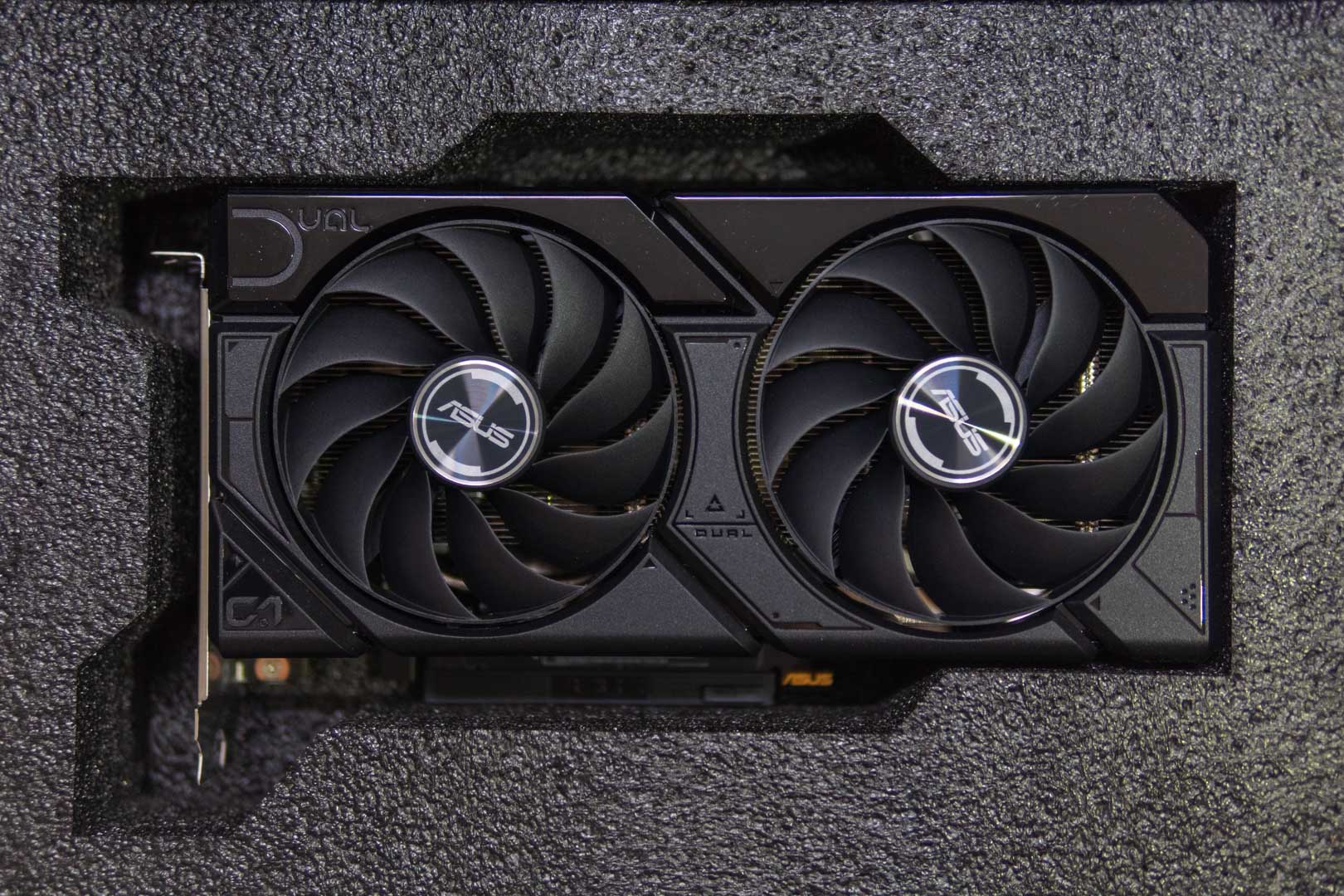
This consistency in size and design across the ASUS Dual GPU range means that this card, like its siblings, is optimized for space efficiency without compromising on performance. The smaller footprint of the ASUS Dual Radeon™ RX 7600 XT OC Edition makes it an ideal candidate for gamers who are building or upgrading their PCs with space and budget in mind. The focus on maintaining a compact size helps ensure that even in tighter builds, airflow and cable management can be easily managed, contributing to better overall system performance and stability.
Benchmark
Setup
For a thorough evaluation of the ASUS Dual Radeon™ RX 7600 XT OC Edition, we’ve designed a benchmarking setup that complements the mid-range nature of this GPU. Our aim is to mirror a realistic yet high-performance gaming environment, providing insights into how this graphics card performs under various conditions.
| CPU | AMD Ryzen™ 5 7600X |
| Motherboard | ASRock X670E Taichi Carrara |
| RAM | PNY XLR8 Gaming MAKO™ DDR5 6000Mhz |
| Storage | Kingston Technology KC3000 PCIe 4.0 NVMe M.2 SSD |
| PSU | FSP Hydro GT PRO 850W |
At the heart of our benchmarking rig is the AMD Ryzen 5 7600X, a choice that matches perfectly with the GPU. This processor is known for its excellent gaming performance, particularly in mid-range setups. It’s capable of handling the latest games without bottlenecking the graphics card, ensuring that we get a clear picture of the GPU’s capabilities.
To support our setup, I selected the ASRock X670 Taichi Carrara which was reviewed previously. This motherboard is not just a piece of art; it’s designed to provide a stable foundation for high-performance gaming. It helps us avoid unnecessary power draw and instability issues, which is crucial for accurate benchmarking.
For RAM, we’re equipped with 32GB of PNY Mako XLR8 DDR5, clocked at 6000MT/s. This generous amount of high-speed memory ensures that our system can handle any game or application, providing a smooth multitasking experience during our tests.
Our primary storage solution is the Kingston KC3000 1TB SSD. This drive offers blazing-fast load times, meaning we can jump into games quickly and experience minimal loading screens, ensuring that the storage bottleneck is virtually eliminated from our testing.
Games and Resolution
Our benchmarking tests are conducted in both 1080p and 2K environments to assess the GPU’s performance across the most common gaming resolutions. We’ve chosen a diverse selection of games to test, including:
- Assassin’s Creed Valhalla: A demanding open-world title that tests the GPU’s ability to handle detailed environments and dynamic lighting.
- Cyberpunk 2077: Known for its intensive graphics requirements, this game helps us evaluate the GPU’s performance in a densely populated urban setting.
- Far Cry 6: This game provides insights into how the card handles lush environments and long draw distances.
- GTA V: Despite its age, GTA V remains a benchmarking staple due to its well-optimized engine and variability in gameplay scenarios.
- Palworld: A newer title that offers a mix of creative gameplay elements and graphical demands.
- Red Dead Redemption 2 (RDR 2): A game celebrated for its breathtaking visuals and expansive world, testing the limits of graphical fidelity.
- Shadow of the Tomb Raider: This game includes a built-in benchmark tool, making it a reliable test for comparing performance across different setups.
- Starfield: Despite its launch amidst much fanfare, Starfield has stirred controversy, primarily due to its use of cutting-edge technology juxtaposed with less appealing 3D models. This dichotomy makes it an intriguing benchmark for evaluating the GPU’s performance, as it navigates through the game’s advanced tech features while rendering its unique visual style
Results
At 1080p, the GPU shines, especially in games that benefit from mature optimization. Titles like Assassin’s Creed Valhalla and Cyberpunk 2077 hover around the 100 FPS mark, showcasing the GPU’s capability to deliver a smooth, immersive experience in well-optimized environments. Far Cry 6, GTA V, and Shadow of the Tomb Raider exceed expectations with 121, 126, and 142 FPS respectively, emphasizing the GPU’s strength in rendering detailed game worlds efficiently when the game code is polished.
However, Palworld and Starfield stand out for different reasons, each managing lower frame rates of 76 and 78 FPS at 1080p. These titles, known for their unoptimized game states, pose challenges with Palworld exhibiting numerous graphical bugs and instability issues, and Starfield grappling with optimization concerns despite its use of newer technologies. These results highlight a crucial aspect of gaming hardware performance: the significant impact of game optimization on achieving high frame rates.
Moving to 2K resolution, a predictable decline in FPS across all titles reflects the increased demand of higher pixel counts. Yet, the results remain impressive for the ASUS Dual Radeon™ RX 7600 XT OC Edition. Well-optimized games like Assassin’s Creed Valhalla, Cyberpunk 2077, and GTA V maintain playable frame rates above 70 FPS, demonstrating the GPU’s adeptness at handling more demanding resolutions in games that have undergone thorough optimization. Far Cry 6 and Red Dead Redemption 2 both impress with 87 FPS, showing that detailed and expansive worlds can be enjoyed smoothly at 2K. On the other hand, Palworld and Starfield show more significant dips to 51 and 67 FPS, underscoring the performance challenges presented by titles still wrestling with optimization issues.
Ray Tracing
While the specific ray tracing performance results aren’t depicted in our graphs, the ASUS Dual Radeon™ RX 7600 XT OC Edition’s capabilities in this area were tested, revealing mixed results. For instance, in Shadow of the Tomb Raider, it managed a respectable 86 FPS at 1080p and 55 FPS at 2K with ray tracing enabled. However, in more demanding ray tracing scenarios, like Cyberpunk 2077, performance dropped significantly, often to the tens for FPS. Results have also indicated that while the GPU supports ray tracing in games such as F1 23, Dying Light 2 and Spider-Man: Miles Morales, its performance with ray tracing enabled is generally on the weaker side, suggesting it’s more suited for raster gaming scenarios.
Power Draw
During our benchmarking sessions, the GPU exhibited an average maximum power draw of 220 watts across all tested games. This level of power consumption is indicative of the card’s mid-range positioning, striking a balance between delivering substantial gaming performance and maintaining a manageable power requirement.
The thermal performance of the card complemented its power consumption profile well, with temperatures peaking at 64°C under load. This temperature is well within the safe operating limits for modern GPUs, demonstrating the effectiveness of the card’s cooling system in managing heat. The dual-fan design, a hallmark of the ASUS Dual series, plays a significant role in achieving this thermal efficiency, ensuring that the card remains cool even during intense gaming sessions.
What’s Good
- With 16GB VRAM, it serves more purpose than just a gaming GPU as this will serve greatly in the segments of 3D Modelling, Animation and Video Rendering softwares such as DaVinci Resolve
- Great card for 1080p gaming, decent for 2k.
- Great temperature on load.
Places to improve
- Ray Tracing performance still needs further improvement from AMD.
- Pricing is still somewhat on the right side of the scale.
Verdict
The ASUS Dual Radeon™ RX 7600 XT OC Edition stands out as a formidable mid-range GPU, striking an impressive balance between performance, power efficiency, and thermal management. Throughout my testing, it has demonstrated its capability to deliver excellent frame rates in a variety of games at both 1080p and 2K resolutions. With its power consumption capped at an average maximum of 220 watts and maintaining a peak temperature of 64°C, it’s clear that this GPU is designed to offer sustainable high performance without putting undue stress on your system.
One of the most commendable features of the RX 7600 XT is its 16GB of VRAM, which not only future-proofs the card for upcoming game titles but also enhances its versatility for non-gaming applications. This substantial memory allocation is a boon for creative professionals and enthusiasts who engage in video editing, 3D modeling, and other memory-intensive tasks, making this GPU a multifaceted powerhouse that extends beyond gaming.
However, it’s important to manage some expectations when it comes to ray tracing performance. While the RX 7600 XT is capable of enabling ray tracing in certain titles, its performance in this area is not its strong suit, particularly in more graphically demanding games. For gamers whose priority is experiencing the pinnacle of visual fidelity through ray tracing, this may be a point of consideration.
The ASUS Dual Radeon™ RX 7600 XT OC Edition distinguishes itself by bridging the performance gap between the other models, but it is priced towards the upper end of the spectrum, reflecting its slightly premium positioning. Moreover, when compared to its non-AMD competitors, it offers more affordability, presenting significant value. This blend of competitive pricing with robust performance and versatility renders it an attractive option for a wide array of users. Whether it’s gamers seeking to immerse in the latest high-resolution titles or professionals and creators requiring a potent, versatile GPU, the RX 7600 XT emerges as a premium investment.
In conclusion, the ASUS Dual Radeon™ RX 7600 XT OC Edition is a good choice for gamers looking to enjoy current titles at high resolutions without compromising on performance. Its ample VRAM makes it a forward-thinking investment that caters not only to gamers but also to creators and professionals seeking a versatile GPU. While its ray tracing capabilities may not compete with competing models, its overall performance, efficiency, and the value it offers make it a compelling option for those looking to upgrade their gaming setup or workstation.
Final Score : 8/10
Official Product Link : https://www.asus.com/my/motherboards-components/graphics-cards/dual/dual-rx7600xt-o16g/
